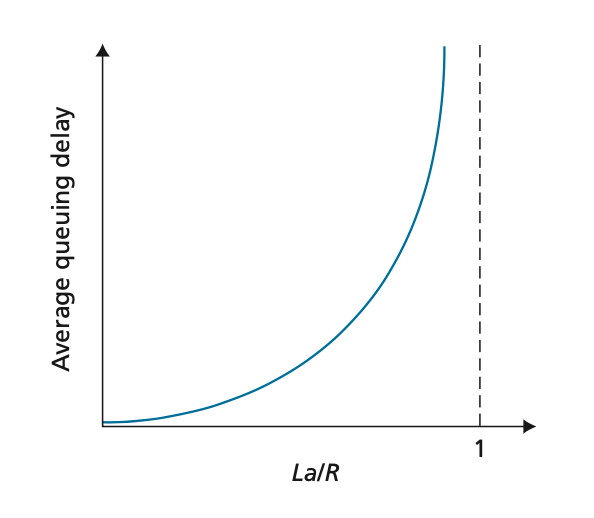Queuing Delay
Consider the queuing delay in a router buffer, where the packet experiences a delay as it waits to be transmitted onto the link. The length of the queuing delay of a specific packet will depend on the number of earlier-arriving packets that are queued and waiting for transmission onto the link. If the queue is empty and no other packet is currently being transmitted, then our packet’s queuing delay will be zero. On the other hand, if the traffic is heavy and many other packets are also waiting to be transmitted, the queuing delay will be long.

Assume a constant transmission rate of R = 1400000 bps, a constant packet-length L = 6500 bits, and a is the average rate of packets/second. Traffic intensity I = La/R, and the queuing delay is calculated as I(L/R)(1 - I) for I < 1.
Question List
1. In practice, does the queuing delay tend to vary a lot? Answer with Yes or No
2. Assuming that a = 40, what is the queuing delay? Give your answer in milliseconds (ms)
3. Assuming that a = 58, what is the queuing delay? Give your answer in milliseconds (ms)
4. Assuming the router's buffer is infinite, the queuing delay is 0.9136 ms, and 647 packets arrive. How many packets will be in the buffer 1 second later?
5. If the buffer has a maximum size of 741 packets, how many of the 647 packets would be dropped upon arrival from the previous question?
Solution
1. Yes, in practice, queuing delay can vary significantly. We use the above formulas
as a way to give a rough estimate, but in a real-life scenario it is much more complicated.
2. Queuing Delay = I(L/R)(1 - I) * 1000 = 0.1857*(6500/1400000)*(1-0.1857) * 1000 = 0.7021 ms.
3. Queuing Delay = I(L/R)(1 - I) * 1000 = 0.2693*(6500/1400000)*(1-0.2693) * 1000 = 0.9136 ms.
4. Packets left in buffer = a - floor(1000/delay) = 647 - floor(1000/0.9136) = 0 packets.
5. Packets dropped = packets - buffer size = 647 - 741 = 0 dropped packets.
That's incorrect
That's correct
The answer was: Yes
The answer was: 0.7021
The answer was: 0.9136
The answer was: 0
The answer was: 0